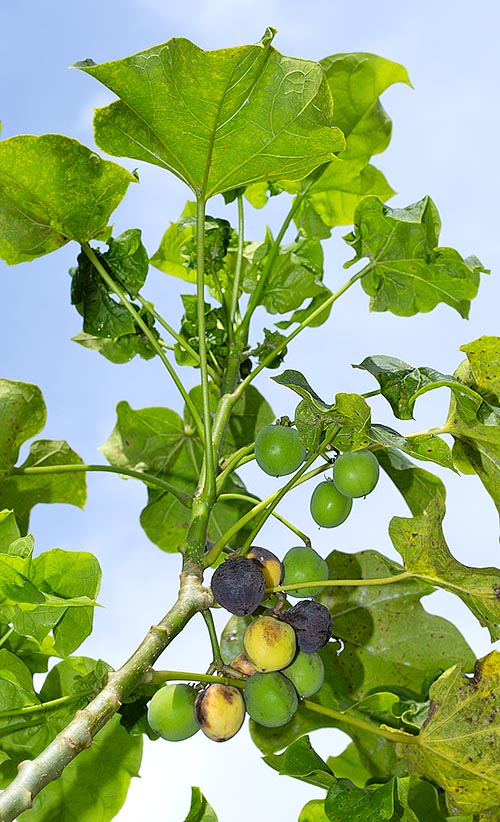
M2 Capital Sdn. Bhd
Add a review FollowOverview
-
Founded Date August 30, 1953
-
Posted Jobs 0
-
Viewed 55
Company Description
What is a Jatropha Curcas Tree: Jatropha Uses in The Landscape

When you buy through links on our website, we might earn an affiliate commission. Here’s how it works.
Jatropha (Jatropha curcas) was once touted as the new wunderkind plant for biofuel. What is a Jatropha curcas tree? The tree or bush grows in any kind of soil at a quick rate, is hazardous, and produces fuel fit for diesel engines. Read on for more Jatropha tree details and see how you rate this plant.
What is a Jatropha Curcas Tree?
Jatropha is a perennial shrub or tree. It is drought-resistant and simple to grow in tropical to semi-tropical locations. The plant lives for up to 50 years and might grow almost 20 feet (6 m.) tall. It has a deep, thick taproot which makes it versatile to poor, dry soil. The leaves are oval, lobed, and deciduous. Overall, the plant is not especially visually attractive, but it does get appealing green cymes of flowerets which turn into a tri-compartment fruit with large black seeds. These big are the reason for all the hullaballoo, due to the fact that they are high in burnable oil. A fascinating piece of jatropha curcas tree details is that it is listed as a weed in Brazil, Fiji, Honduras, India, Jamaica, Panama, Puerto Rico, and Salvador. This shows how versatile and hardy the plant is even when presented to a new region. Jatropha curcas growing can produce oil that is an excellent alternative for present biofuels. Its usefulness has been challenged, however it is true the plant can produce seeds with an oil content of 37%. Unfortunately, it is still a part of the food vs. fuel argument, as it needs land that might go into food production. Scientists are trying to establish a “incredibly Jatropha” with larger seeds and, for that reason, larger oil yields.
Jatropha Curcas Cultivation

jatropha curcas usages are rather limited. Most parts of the plant are toxic to eat due to the latex sap, but it is used as a medical. It works in treating snakebite, paralysis, dropsy, and apparently some cancers. The plant may have come from in Central to South America, but it has actually been presented around the globe and flourishes wild in locations like India, Africa, and Asia. Chief among Jatropha uses is its possible as a tidy burning fuel to change nonrenewable fuel sources. Plantation growing in certain locations has been attempted, but total Jatropha curcas cultivation has actually been a dismal failure. This is because the production mass of oil can not equal the land usage by cropping Jatropha.
jatropha curcas Plant Care and Growth
The plant is easy to grow from cuttings or seed. Cuttings result in quicker maturity and quicker seed production. It chooses warm climates, however it can endure a light frost. The deep taproot makes it drought-tolerant, although the best development will be accomplished with additional watering sometimes. It doesn’t have any major disease or bug concerns in its natural areas. It might be pruned, however flowers and fruit form on terminal development, so it is best to wait until after blooming. No other jatropha curcas plant care is needed. This plant is useful as a hedge or living fence, or simply as an ornamental stand-alone specimen.
Gardening suggestions, videos, information and more provided right to your inbox!
Register for the Gardening Know How newsletter today and receive a complimentary download of our DIY eBook “Bring Your Garden Indoors: 13 DIY Projects For Fall And Winter”.
Bonnie Grant is a professional landscaper with a Certification in Urban Gardening. She has been gardening and writing for 15 years. A previous expert chef, she wants edible landscaping.
